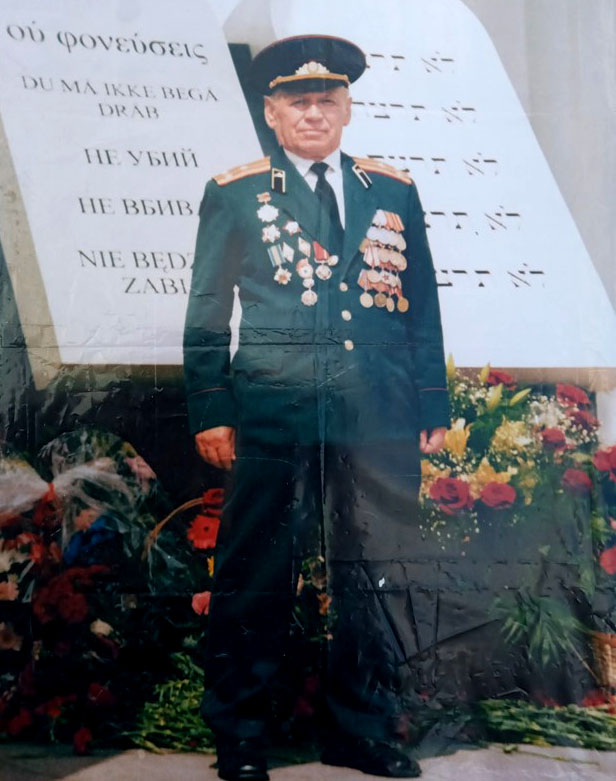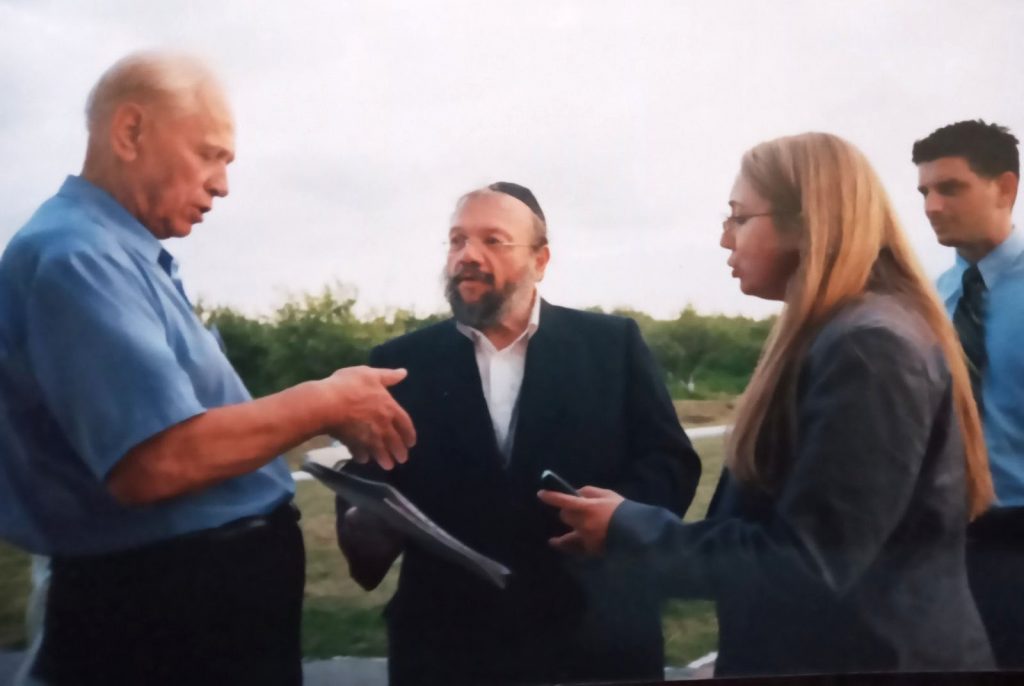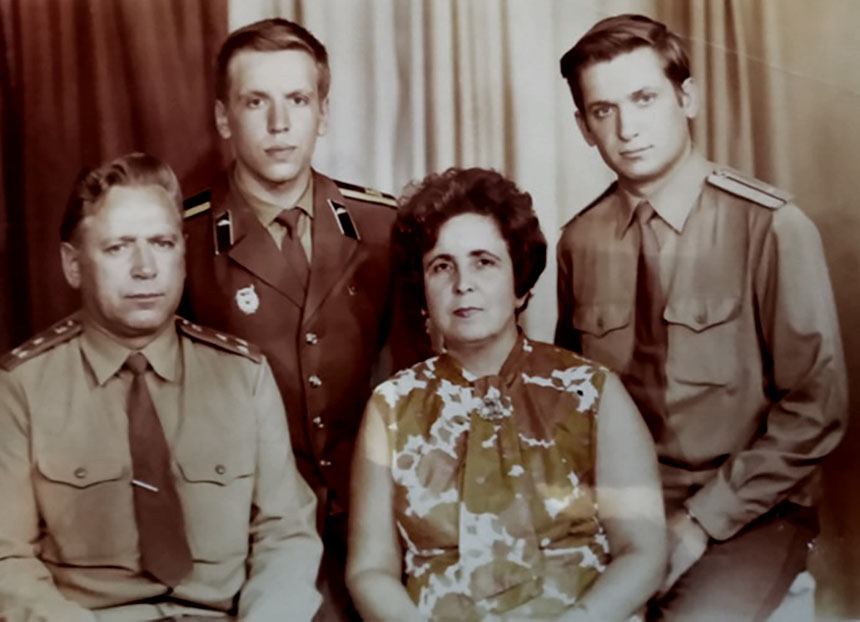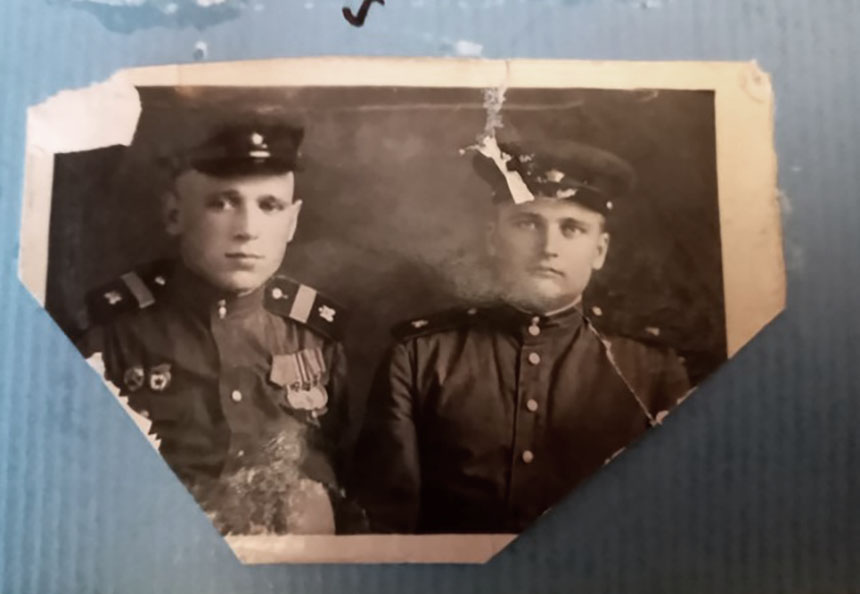Ukrainian Righteous Among the Nations and war: how the aggressor tries to erase history

Russia began its war against Ukraine under the slogans of denazification and accusing Ukrainians of Nazism. This is despite the fact that Jewish leaders in Ukraine, such as Josef Zissels and Chief Rabbi of Ukraine Moshe Azman, have said many times that the level of antisemitism in Ukraine has been declining and is generally very low.
Russian troops are hurting Jewish life in Ukraine. The Russians bombed Kyiv's Babyn Yar and the Berkovets cemetery, where Jewish graves are located. Holocaust survivors died in the Kharkiv region and in Mariupol.
One of the first Jewish places to be bombed was the Drobytsky Yar memorial in Kharkiv. It is the site of the Nazi massacres of the Kharkiv Jews in 1941–43, when more than 12,000 people died.
The Drobytsky Yar memorial was constructed at the site of executions in the years of Ukraine's independence. Righteous Among the Nations Stanislav Ischenko was the chief construction manager there from 2001 to 2006.
"Excursions and educational groups of students regularly visited the Drobytsky Yar memorial. It was one of the few completed Holocaust memorials in Ukraine," says Yurii Radchenko, historian and director of the Center for Interethnic Relations Research in Eastern Europe.
Stanislav Ischenko was a key active participant in Holocaust commemoration.
During World War II, Ischenko lived in the Zhytomyr region and, together with his father, saved several Jewish families from death.

Here is what Stanislav Ischenko told the United States Holocaust Museum about the Holocaust in an interview:
"During the initial period of the war, June 22, 1941, I was with the family of my father Iosif in the village of Veresy, Zhytomyr region. As soon as the war broke out, in the first days of July, the Germans already showed up in our region. Their arrival was immediately followed by the repression, persecution, and destruction of the Jewish population. The front shifted; the corpses of soldiers from both sides were scattered all around; rivers of blood flowed. At the same time, the Nazis in Zhytomyr staged a mass terror campaign to destroy the Jewish population. It was their program and the second war: the first war was on the fronts, while the second one was in the rear in the occupied territories, a war to exterminate the Jewish population, including in the Zhytomyr region. That was a terrible hell, when people were snatched without trial or investigation — maybe on some tip — and shot on the spot. Therefore, the remaining Jewish population of the city (those who had not evacuated or gone to the front) — mainly women, children, and the elderly — fled wherever they could to escape. They ran through the villages and to their friends, including my father Iosif. We lived in Veresy, a village eight kilometers away from Zhytomyr surrounded by forests on all sides. Unable to reach it by road, they walked through the woods to be saved. My father immediately knew that help was needed and made a decision. He also got me involved, and I did this job with pleasure. My task was to meet refugee Jews from Zhytomyr because my father's house looked out on the outskirts, the field, and the forest, and then to place them in the shelter inside. Then, at night, my task was to take them to other locations, because we could only shelter 12-15 people, while refugees from Zhytomyr came in large numbers. Some found us just by chance; others followed rumors, and still others apparently knew that, according to various sources, there was an Iosif in Veresy who took in and sheltered Jews. Despite the danger, my father did it consciously. Since our shelter was not big enough, another one was set up.
It was a covered dugout. His father-in-law Shimon ... he had a father-in-law; my father married a second time, and my mother died in 1934. The second shelter was at Shimon's place, on the neighboring street. And the third one was at my father's sister Ksenia's place. So, we had three shelters. And 27-30 refugees from Zhytomyr were constantly present in those three shelters. Some came and remained with us, while others came, stayed for 2-3 days, and asked for help in order to move on, because our place also exposed them to certain danger, since Zhytomyr was only a short distance away and there could be policemen and other raids. And some of them left, while others arrived. And so, they kept coming and going. Later, some returned, such as a Fridman. According to my father — and the Jewish News of Ukraine newspaper that also published the figure — a total of 312 people passed through these three shters."

According to the Yad Vashem Holocaust History Museum, Iosif and Stanislav Ischenko saved Zinaida Katz, Sosia Kelman, Nadia Korolchuk, Don Omelyanchuk; Alexandra, Mark, and Semeon Fridman; Dmitry, Maya, and Faina Shund, and other Jews.
Iosif and Stanislav Ischenko were recognized as Righteous Among the Nations.
Until last year, Stanislav Ischenko remained the last living Righteous Among the Nations in Kharkiv.
He did not see how a Russian missile hit the Menorah sign over the Drobytsky Yar memorial on February 26, 2022. There are no military facilities nearby. It was not an accidental hit, but a bombing attack targeted at a Jewish memorial.
Julia Goldenberg, the founder of the 2U Charitable Foundation, says:
"The Drobytsky Yar memorial complex is one of the Holocaust symbols. During the Nazi occupation, an estimated 15,000-20,000 people were massacred there just because they were Jews.
Destroying monuments to Nazi victims to fight against Nazism is something new. I may be wrong, but there were no military installations near the memorial. Of course, it could be written off as an accident — just like the strike on the territory of Babyn Yar in Kyiv and damage to the part of a Kyiv cemetery where Holocaust survivors are buried — if it were not for one thing ... The statements by Russia's Minister of Foreign Affairs that Hitler had a Jewish background have undisguised antisemitic content. I have not seen either an apology from the experienced diplomat or his resignation, so there can be only one conclusion: the aggressor is trying to provoke a new flare-up of hatred. Out of malice and impotence, they are playing the antisemitic card as their last trump card, thus demonstrating exactly where to look for the Nazis."
Ihor Dvorkin, Associate Professor, Department of Ukrainian and Cultural Studies and the History of Science, Kharkiv Polytechnic Institute:
"Drobytsky Yar on the outskirts of Kharkiv was the starting point for most Kharkiv Jews who found themselves under Nazi occupation. Jews from the Kharkiv ghetto were massacred there in late December 1941 to early January 1942.
In independent Ukraine, monuments to Holocaust victims were erected throughout the country, primarily on the initiative of NGOs. Drobytsky Yar and the site of the Jewish ghetto, the most significant memorial sites in Kharkiv, were marked in the early 1990s. However, the first monument, made from iron, was set up in Drobytsky Yar back in 1955 on the initiative of Oleksandr Kahan, a WWII veteran with a disability. In 1967, the local authorities erected a small rock monument with the inscription' Victims of the 1941-42 fascist terror rest here'. A memorial complex was unveiled in December 2002, with Israeli Ambassador Anna Azari in attendance. The first stage of construction included the Menorah ('Tree of Life') memorial sign, an alley, and a monument. In 2018, Ukraine's Ministry of Culture entered the memorial complex into the State Register of Immovable Monuments.

During the years of independence, Holocaust memorial sites in Kharkiv became the venue for commemorative events organized by the municipal authorities and NGOs, such as the Drobytsky Yar Kharkiv Regional Committee. Such events are held on Holocaust memorial dates in Drobytsky Yar, near the complex on the site of the ghetto, and in the Kharkiv Holocaust Museum. The biggest events, particularly official commemorative ceremonies for the massacred Jews, take place precisely in Drobytsky Yar. They are attended by representatives of the local authorities, the Israeli ambassador, cadets, and students.
The memorial complex suffered destruction during the Russian invasion of Ukraine in 2022. The Menorah memorial sign was damaged on March 26 as a result of shelling by Russian troops."
By Marharyta Ormotsadze Yakovleva
Marharyta Ormotsadze Yakovleva is the co-founder/producer of the Word of the Righteous project that tells about the valor of Ukrainians who saved Jews throughout Ukraine during the Holocaust.
All photos are from the family of Stanislav Ischenko.
Translated from Russian by Vasyl Starko.



















